
What is RLX Titanium? Deepsea Challenge 126067 & Rolex Titanium
It’s no secret that Rolex is the king of proprietary materials in the watch world.
Rolex is a brand that strives to make as many of the parts of its watches in-house. It also invests heavily in research and development in order to invent new, proprietary materials that have exactly the long-lasting and high-quality properties that Rolex is looking for. This also allows Rolex to set itself apart from its competitors and brag about how unique and special its watches are.
In fact, Rolex even gives proprietary names to materials and items that are not necessarily invented by Rolex, just to make its watches appear more exclusive and unique. This includes the company’s name for two-tone (Rolesor) and Oystersteel (which, although we don’t know the exact alloy composition, is believed to be regular 904L steel).
With the millions and millions that Rolex invests into research and development every year, this must naturally yield some results.
And in 2022, Rolex publicly announced one such result – RLX titanium.
In this article, we will take a deep dive into this new material from Rolex. This launch from Rolex is important for many reasons. Partly because it has been a long time since Rolex released a new material, and partly because it can play an important role in future watch releases from Rolex.
What is RLX titanium?
According to Rolex, RLX titanium is a grade 5 titanium alloy that Rolex chose due to its resistance to deformation and corrosion, and weightlessness.
Rolex, being the secretive company it is, has presented very limited information about the grade 5 titanium it calls RLX titanium. But Rolex’s statement ”by using a grade 5 titanium alloy selected by Rolex” suggests that it is an alloy that Rolex didn’t create from scratch all by itself. As you probably know, Rolex has its own foundry which has allowed Rolex to create its own precious metals and develop alloys such as its patented Everose gold. But there is no such information from Rolex regarding the RLX titanium which suggests that Rolex looked at various grades and alloys of titanium that already existed on the market and then opted for the one with the properties that Rolex deemed the most suitable for a watch. And then, of course, gave it a new name to make it seem proprietary.
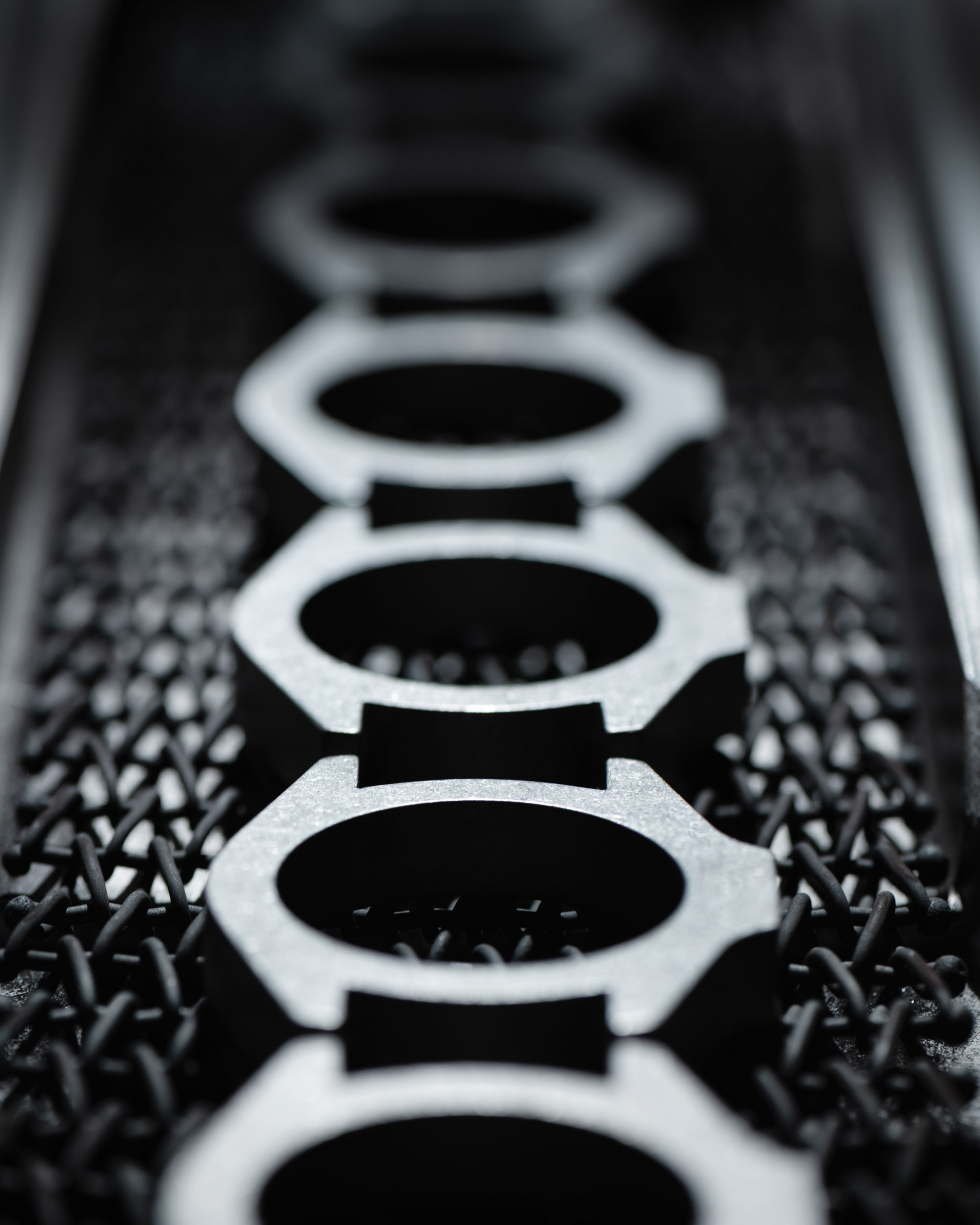
With all of this said, whilst Rolex doesn’t create the titanium alloy from scratch, the company does use its foundry to melt and process the metal from material to finished products. This means that they create the watch cases and each individual part from material to finished product. And that is of course a great feat when you’re working with a material that is even more challenging to work with than stainless steel, let alone gold.
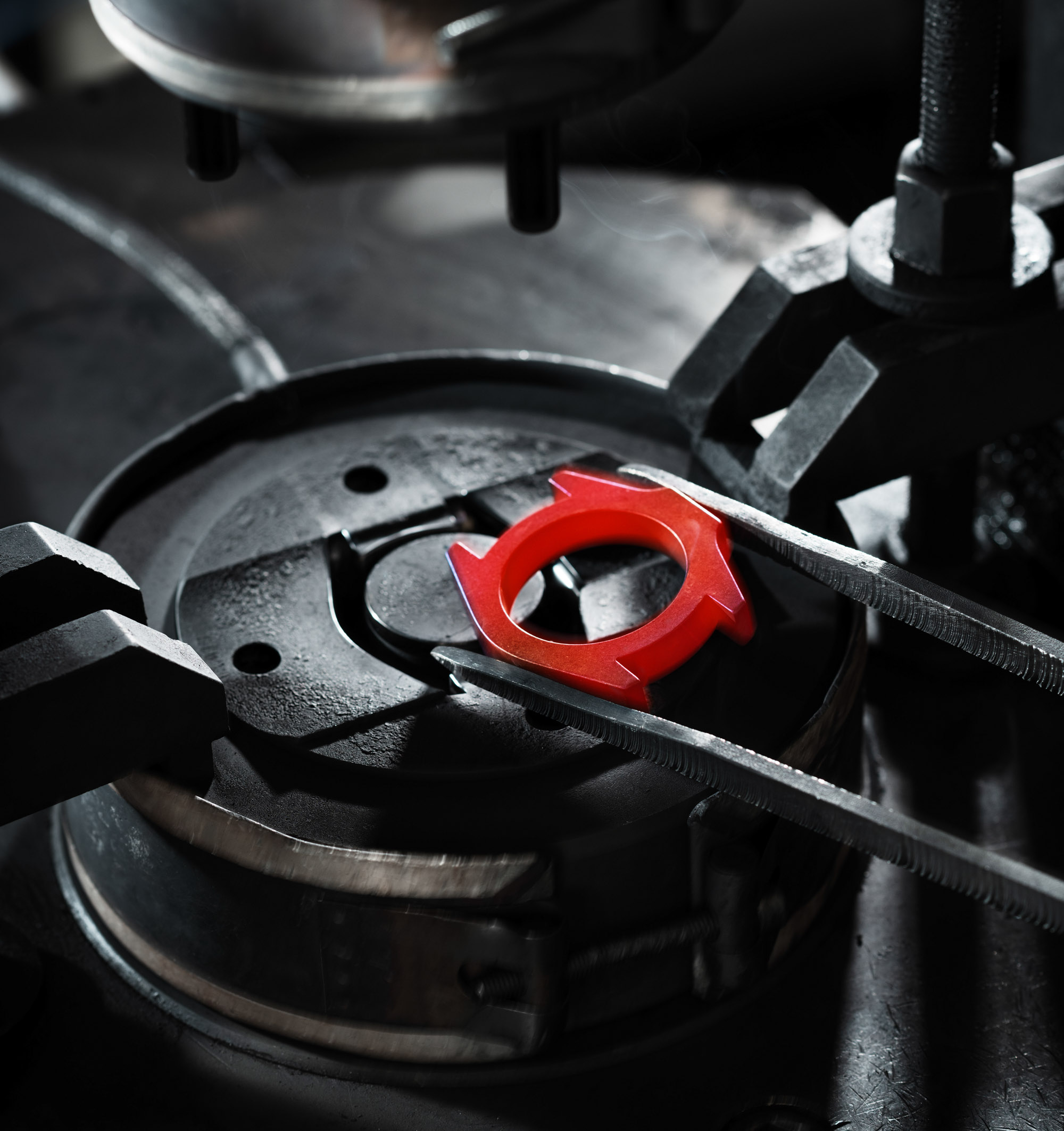
RLX titanium, or grade 5 titanium, is a highly competent material that is an excellent choice for professional sports and dive watches – in particular the Deepsea Challenge. It is highly corrosive-resistant, which was a problem with older Rolex watches that began corroding (although Rolex solved this by moving from 316L steel to 904L steel, also known as Oystersteel), it is about 40% lighter, and has more mechanical resistance than stainless steel. The latter is of course very important when you’re looking to build a watch that is meant to withstand more than 11,000 meters of pressure.
Grade 5 titanium is the most widely used titanium alloy on the market. This alloy offers a high strength but at the same time a relatively low ductility.
As opposed to pure titanium, grade 5 offers a much higher tensile strength as well as a higher yield point. For this reason, it is the preferred material when strength plays a greater role than corrosion resistance, although the corrosion-resistant properties are excellent as well.
Grade 5 titanium is primarily used in aircraft and spacecraft.
Despite the fact that many competitors have produced titanium watches for a long time, Rolex has been late to the party. Its sister company Tudor, for example, released the Pelagos 25500 back in 2012. Moreover, brands like Omega, Breitling, Richard Mille, Hublot, and many more have produced titanium watches for many years.
When it comes to using titanium for watches, there are pros and cons. And we can only speculate that Rolex didn’t quite see a critical purpose for introducing a titanium watch until 2022. The reason? Whilst titanium is extremely lightweight, corrosion-resistant, and durable, it’s not generally regarded as a luxury material. There is just one tiny exception which is that Rolex has been using titanium for the caseback of the Deepsea for weight-saving purposes.
 For Rolex to motivate using titanium, they would have to create a model that is super sporty and which is primarily focused on performance rather than luxuriousness. And that is exactly what they did with the Deepsea Challenge ref 126067.
For Rolex to motivate using titanium, they would have to create a model that is super sporty and which is primarily focused on performance rather than luxuriousness. And that is exactly what they did with the Deepsea Challenge ref 126067.
With that said, if Rolex sees room in its collection of watches to add a truly functional and sporty timepiece, it likely will when they see fit. And one such watch could be the Yacht-Master that which was developed as a prototype. This brings us to the next point.
The RLX titanium Yacht-Master prototype
What many people don’t know is that Rolex actually created a titanium watch before they launched the Rolex Deepsea Challenge RLX titanium reference 126067 in 2022. And the reason most people are not aware of that is that the watch they created was a prototype and was never released commercially.
Visa detta inlägg på Instagram
In 2021, the British sailor Sir Ben Ainslie was spotted in a photo wearing a 42mm Yacht-Master titanium without a date. Most people didn’t even think about the fact that this watch was a prototype and simply mistook it for the 42mm Yacht-Master in white gold.
The Yacht-Master RLX titanium prototype was created in late 2020 and could be seen in the wild repeatedly. In an interview In October 2020, the Rolex testimony explicitly explained the watch he was wearing:
”The team at Rolex has been incredibly thoughtful by giving me a titanium Yacht-Master 42,” he says. “I’m extremely honoured to have it, plus, from a performance perspective, every little bit of weight that we can save, helps us to go faster with the boat.”
Yet still, this RLX titanium prototype went under many people’s radars.
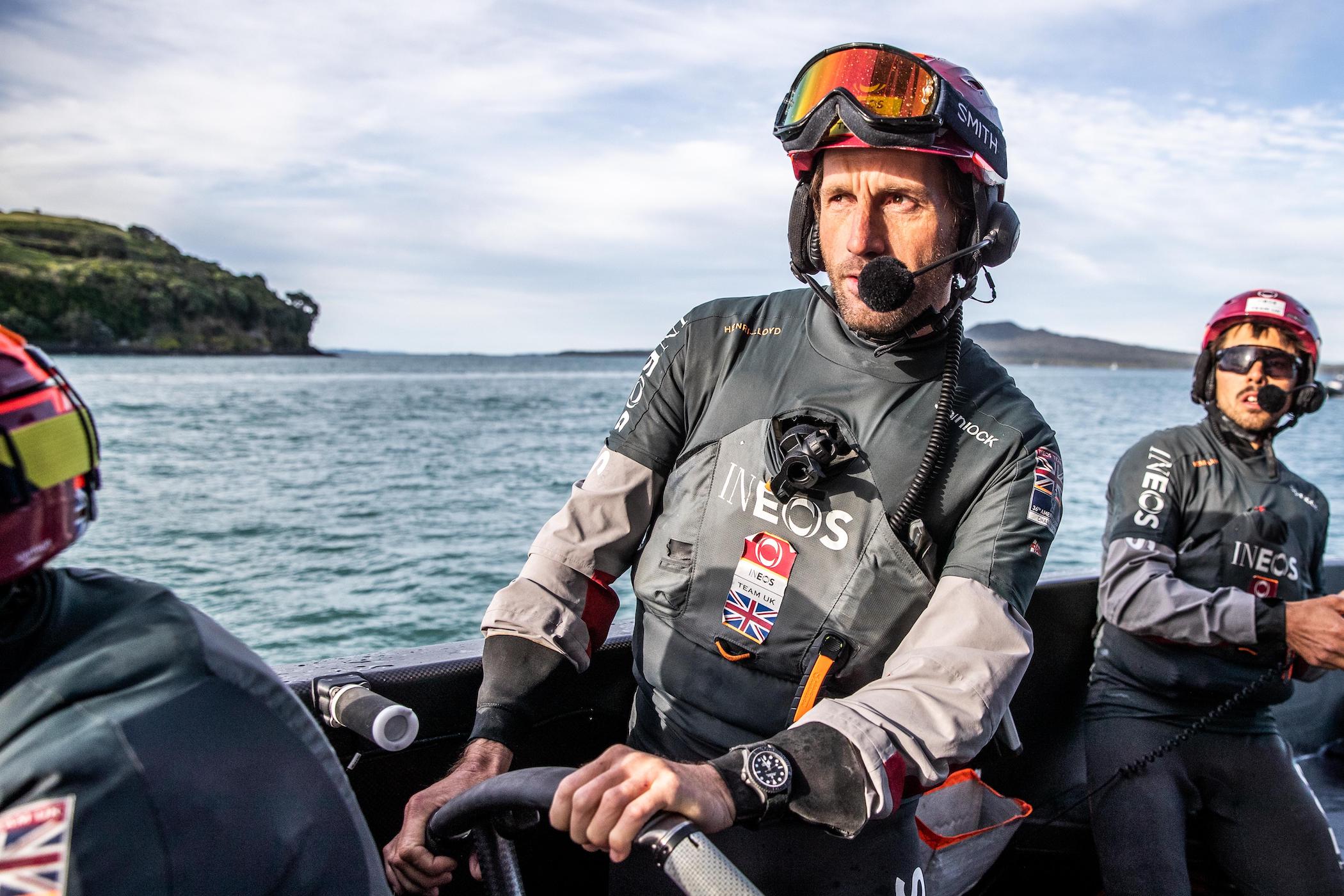
Since Rolex is all about functionality and making watches that are truly helpful for professionals when making professional watches, his testimony reflects that a Yacht-Master in titanium makes perfect sense.
Rolex’s professional watches are, as the name suggests, built for professionals. So what Rolex often does when they develop new models is that they consult professionals in the field that the watch is intended for. In fact, this is something that Rolex has done for many decades.
Back in the 1950s, Rolex turned to the French diving company COMEX, Compagnie maritime d’expertises, to have them test dive watches and make sure they met the strict standards of professional divers. In developing the Explorer, Rolex partnered with Sir Edmund Hillary amongst others to have them evaluate Rolex watches whilst on their ascent to the top of Mount Everest. There are plenty of examples where Rolex has created prototypes and developed new models and consulted experts to try them in their intended field. Whit that said, it doesn’t come as a surprise that a prototype Yacht-Master in RLX titanium could be seen on the wrist of a professional sailor.
The fact that Rolex created a prototype Yacht-Master in RLX titanium might suggest that we will have a commercial version in the future. But this also depends on how satisfied Rolex is with the performance and the watch’s characteristics overall. After all, that’s why Rolex has it tested in the first place. But regardless, it certainly makes sense to make the Yacht-Master in titanium. Sailing is a challenging sport. It puts tremendous pressure on the equipment and the sailor himself.
The launch of the first commercial RLX titanium Rolex watch: Rolex Deepsea Challenge RLX titanium reference 126067
Whilst Rolex – being a very secretive company – has not explicitly given all the details for when the idea for RLX titanium first came about, they did share information that suggests that the idea for making a watch in titanium first came about when they created the experimental watch that James Cameron brought with him in the Mariana Trench. The watch worn by Cameron during this mission was the Deeps Challenge. This was a 50mm watch made in full 904L steel. Rolex explained that the watch ”posed a wearability problem due to its weight, as it was made of 904L steel.”.
Therefore, as plans to release a commercial version of this ultra-competent dive watch on the commercial market, Rolex realized that weight was a serious issue in terms of wearability. By using RLX titanium for the case and bracelet, Rolex was able to reduce the weight of the 126067 by 30 percent compared to the experimental watch ”that inspired it”.
With this said, it’s evident that Rolex’s plans for a titanium watch were born many years ago. But for various reasons, it took until 2022 for Rolex to release a commercial watch with RLX titanium. One could assume that Ben Ainslie’s RLX titanium Yacht-Master was one of the ways in which Rolex tested the characteristics of the material in the field to see how it held up in demanding, water-related activities.
So on November 1st, 2022, Rolex, together with the filmmaker and explorer James Cameron unveiled the Oyster Perpetual Deepsea Challenge reference 126067. It makes sense that Rolex released the watch together with James Cameron as he has been the key figure of the original Deepsea Prototype from which the 126067 takes inspiration.
In essence, the Deepsea Challenge is James Cameron’s prototype watch made for the public.

The Deepsea 126067 is inspired by the experimental watch, the Deepsea Challenge, that accompanies James Cameron on his historic and record-breaking descent to 10,908 meters (35,787 foot) into the Mariana Trench on the 26th of March 2012.
The Deepsea Challenge 126067 in RLX titanium is very similar to the original watch from 2012 but also has a few differences. It is guaranteed waterproof to a depth of 11,000 meters/36,090 feet, which is more than the deep dive of James Cameron in 2012. As a nod to this historic event, Rolex even engraved the case back of the 126067 and added ”Mariana Trench”.
Rolex also added the dates “23-01-1960” and “26-03-2012” on the case back. This is done in tribute to two historic dives that were done into the Mariana Trench: the first one done by the oceanographer Jacques Piccard and the U.S. Navy Lieutenant Don Walsh with the Trieste in 1960, and the dive by James Cameron in the DEEPSEA CHALLENGER, in 2012. On both of these expeditions, the divers brought Rolex watches with them on their descent.
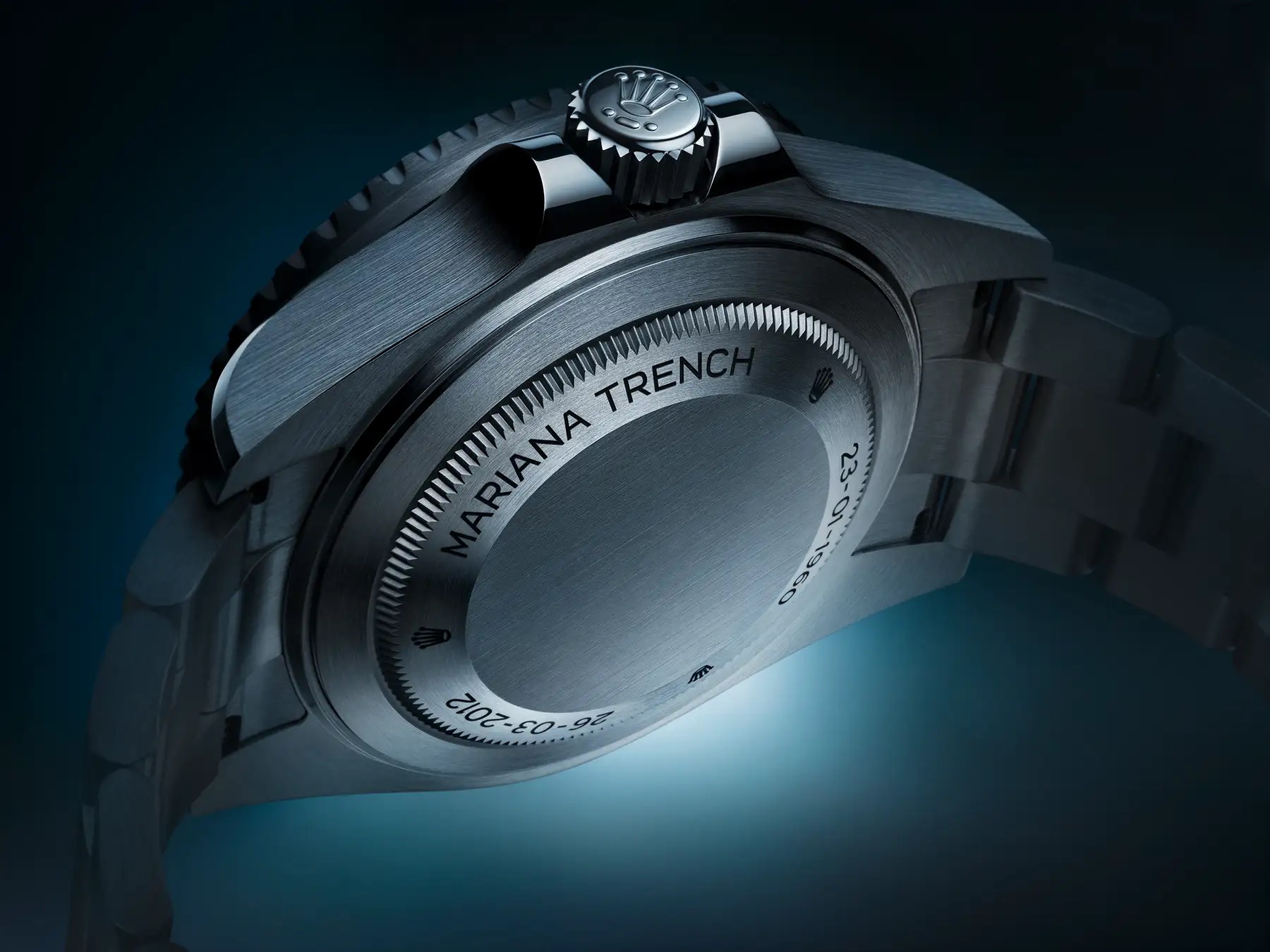
”The Deepsea Challenge is an extension of the experimental watch created in 2012 to accompany James Cameron in the Mariana Trench.”
The biggest difference from the prototype Deepsea Challenge is that it is that the case and bracelet are made in the new material RLX titanium – making it the first-ever commercial Rolex watch in titanium.
Perhaps the most noticeable thing about the 126067 is the size. Apart from being Rolex’s most competent dive watch thus far in terms of water resistance, it is also Rolex’s largest commercially produced watch in terms of size.
Another difference between the production model and the prototype is that the crystal was slimmed down. According to Rolex, some modifications were also made to some of the other components.
The Deepsea Challenge 126067 has a diameter of 50mm. This is indeed huge! And just imagine how the watch would feel on the wrist if you, on top of this, would have the heavy weight of stainless steel. Having said that, this watch is certainly not for everyone. In fact, the regular Deepsea Sea-Dweller, measuring 44mm has long been regarded as too big for most people. So the new Deepsea Challenge certainly requires a large wrist to wear.
But let’s be honest, the Deepsea Challenge is not really intended as a watch for everyday wear. It is more so proof of Rolex’s exceptional capabilities. You can think of it almost as a concept car – only commercially produced – that Rolex can boast with, having produced the most waterproof watch in the world and certainly one of the most competent professional dive watches ever created. And the fact that it is in titanium takes it one step further as it is widely regarded as a professional material as it is frequently used in some of the most demanding industries such as aerospace and others.
Still, Rolex argues that the watch is indeed made with everyday wear in mind. Talking about the original prototype from 2012, this watch was made of stainless steel. But the difference was that the prototype was not intended to be worn on the wrist. Instead, it was attached to the manipulator arm of James Cameron’s Submersible. And even if it would be worn on the wrist, the heavyweight of a watch of this size entirely made in steel would likely be exceptionally uncomfortable. And as discussed, thanks to the use of titanium, Rolex was able to cut down the weight by 30 percent.
It is, for this reason, Rolex decided to make it in titanium and why Rolex says:
”From the production of the case to that of the bracelet, every element of this 50 mm watch has been crafted with everyday use in mind.”
So whilst Rolex argues that the watch is made for everyday wear in mind, you’ll likely struggle to see anyone wearing this watch out in the wild for more than a few hours. It would require a huge wrist and due to its big and chunky size, it’s just a difficult watch to wear.
Another difference between the prototype Deepsea as well as the regular Deepsea Sea-Dweller is the finishing of the watch. The titanium has been polished to a particularly visible grain with a satin finish on the case and bracelet except for the crown guard. To highlight the curved profile of the lugs, Rolex chamfered and polished the top edges.
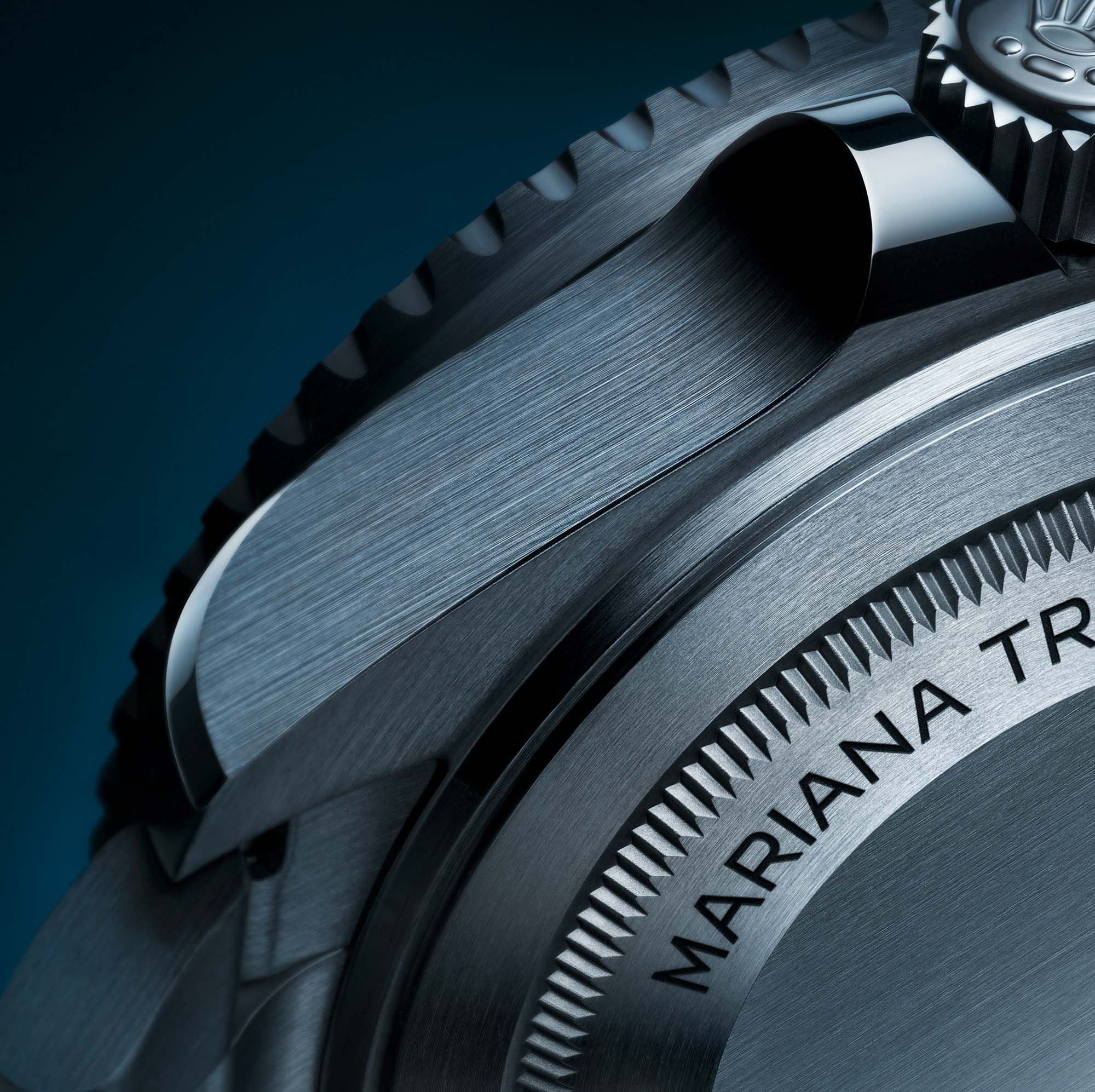
The Deepsea Challenge 126067 is presented on a titanium Oyster bracelet that is equipped with Rolex Glidelock and Fliplock extension system that requires no tools to use. This extension system allows you to wear the watch over a diving suit up to 7mm thick.
The watch is presented with a black dial with a large luminescent hour marker that uses Chromalight for superior legibility. It is equipped with a unidirectional 60-minute rotatable bezel with a Cerachrom black bezel insert.
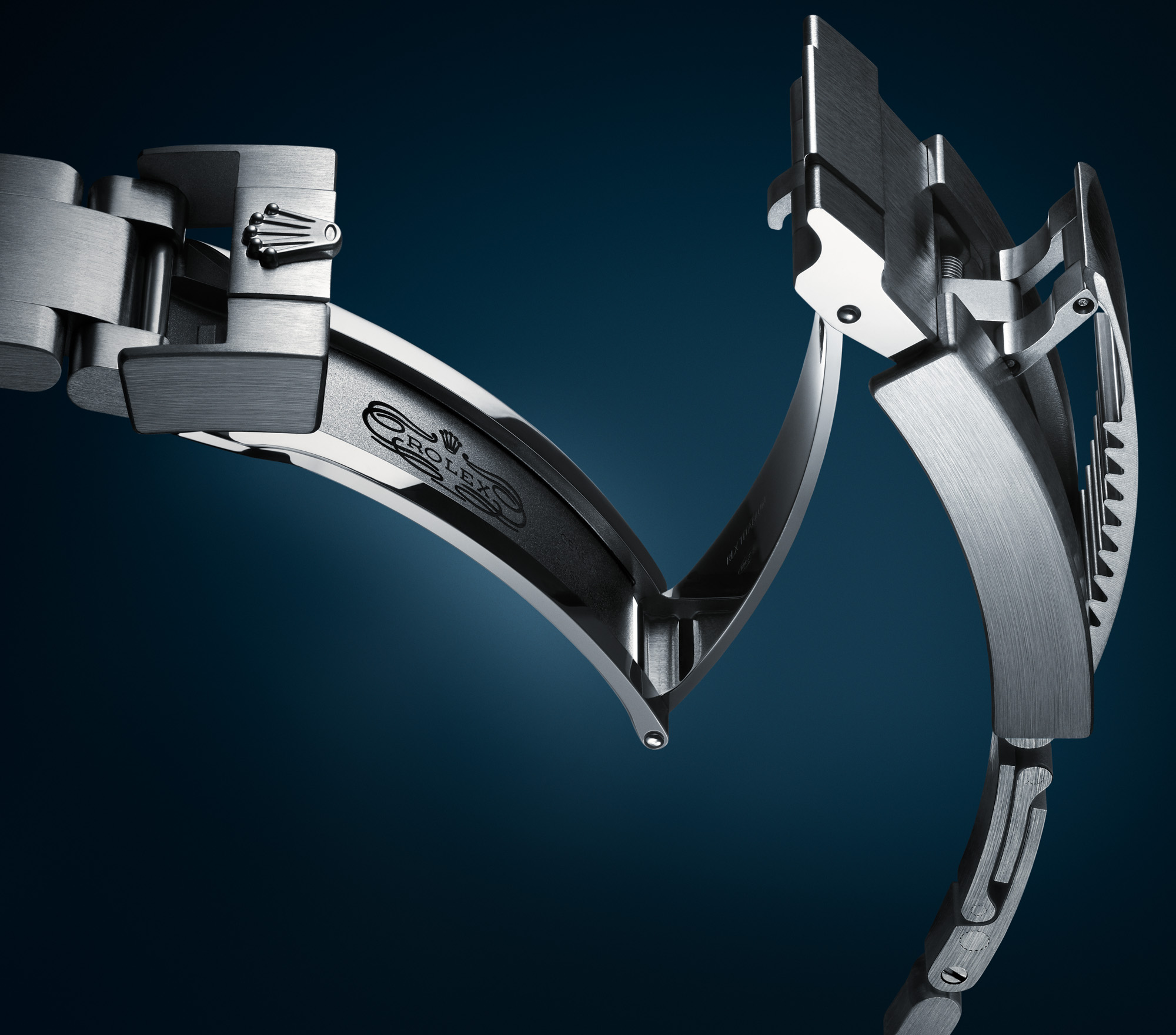
The case is naturally constructed with Rolex’s signature Oyster construction and comprises a thick and slightly domed sapphire crystal and a nitrogen-alloyed steel compression ring, which is Rolex’s signature Ringlock system. The case back is of course also made from RLX titanium. It uses a Monobloc middle case with a screw-down case back and winding crown. As always for professional dive watches, Rolex uses a Triplock crown, with three sealed zones.
Of course, the watch is also built with a helium escape valve. A helium escape valve is a necessity in all deep-dive watches and the purpose is to allow surplus gas to escape from the watch during decompression in a hyperbaric chamber. This reduces the internal pressure of the watch which could otherwise risk damaging the watch due to too much internal pressure.
It is thanks to this case construction that Rolex was able to create a watch that is able to withstand pressure equivalent to a depth of 11,000 meters. When Rolex released the first Deepsea Sea-Dweller in 2008, they partnered with Comex, Compagnie Maritime d’Expertises, the company that has worked closely with Rolex ever since the company created its first professional dive watch. Together with Comex, Rolex developed an ultra-high-pressure tank with the purpose of testing this watch, which has a water resistance of 3900m.
But as the Deepsea Challenge has a considerably higher water resistance – up to 1,000 meters/36,090 feet, Rolex needed a new testing device. As such, Rolex worked with Comex again to develop a testing machine that could test the RLX titanium Deepsea Challenge. Each watch is tested with an additional safety margin of 25%, which is the required standard for divers’ watches. As such, this means that each Deepsea Challenge that leaves the factory has actually proved itself able to withstand the pressure equivalent to that exerted at a depth of 13,750 meters (45,112 feet). This is seriously impressive.

Rolex themselves say that it took years of development to create this watch. And it’s not surprising. Creating a watch with record-breaking water-resistant capabilities is no easy feat. Moreover, we could assume that the RLX titanium Yacht-Master prototype was one of the ways in which Rolex tested this new material.
”Years of research were required to overcome the watchmaking and manufacturing challenges that its fabrication presented.”
126067 caliber
The Rolex Deepsea Challenge reference 126067 in RLX titanium is powered by the Calibre 3230. This movement was launched by Rolex in 2020 and replaced the precursor, the previous generation 3130.
This movement is a no-date, time-only movement that is used in the Oyster Perpetual 36 and 41, the Submariner 124060, and the Explorer 36.
This movement was – as always – entirely developed by Rolex and is manufactured in-house. It is equipped with numerous patented components such as the Chronergy escapement and the Parachrom hairspring which is insensitive to magnetic fields. For improved shock resistance, it is equipped with Parallax shock absorbers. The barrel architecture of this movement was improved from its precursor, allowing an improved escapement efficiency and thus a greater power reserve. As a result, this caliber has a power reserve of approximately 70 hours. It also has a chronometric precision of –2 /+2 seconds per day.
Rolex Deepsea Challenge 126067 RLX titanium specifications

- Diameter: 50mm
- Height: 23mm
- Lug-to-lug: 61mm
- Crystal thickness: 9.5mm
- Weight: approximately 250 grams
- Caliber: 3230
- Power reserve: approximately 70 hours
- Case: grade 5 RLX titanium
- Bracelet: Oyster bracelet in grade 5 RLX titanium with Oysterlock and Fliplock extension systems
- Luminescence: Chromalight
- Dial Color: Black
- Bezel: Unidirectional 60-minute graduation with a black Cerachrm bezel insert
- Movement certifications: COSC and internal testing, yielding the Superlative Chronometer status
Future Rolex watches in titanium: What does the future hold for RLX titanium?
When Rolex releases a new material, history suggests that they never just use it once. And frankly, it wouldn’t make much sense from a business perspective not to. Investing heavily into research and development costs a lot of resources. So to just use it for one commercial product wouldn’t really justify the cost. Historically, Rolex has often started with one or two products and then rolled out the new material to new products. For example, this is one of the reasons why Rolex eventually introduced the Sky-Dweller in stainless steel. Rolex invested a lot of resources into developing what is one of its most complicated movements ever created, the calibre 9001. Originally, the Sky-Dweller was only available in full gold. As such, this meant that relatively few people could afford to buy it. At the same time, the full-gold versions have hefty price tags, so those who really wanted a Sky-Dweller had to buy a full-gold watch. After some time, Rolex made the Sky-Dweller and calibre 9001 more publicly available by releasing a stainless steel version at a more affordable price tag.
What does this story have to do with RLX titanium and the Deepsea Challenge 126067? Well, in the writing moment, Rolex only has one commercial titanium watch. But we find it unlikely that Rolex will stop here when they’ve worked so hard and invested so many resources into research and development.
With this said, we find it unlikely that Rolex will stop with just one titanium watch in its collection. Therefore, we would be willing to bet our money on the fact that Rolex will release more watches in RLX titanium in the future – potentially a commercial version of the Yacht-Master 42 in RLX titanium. But only time will tell.




